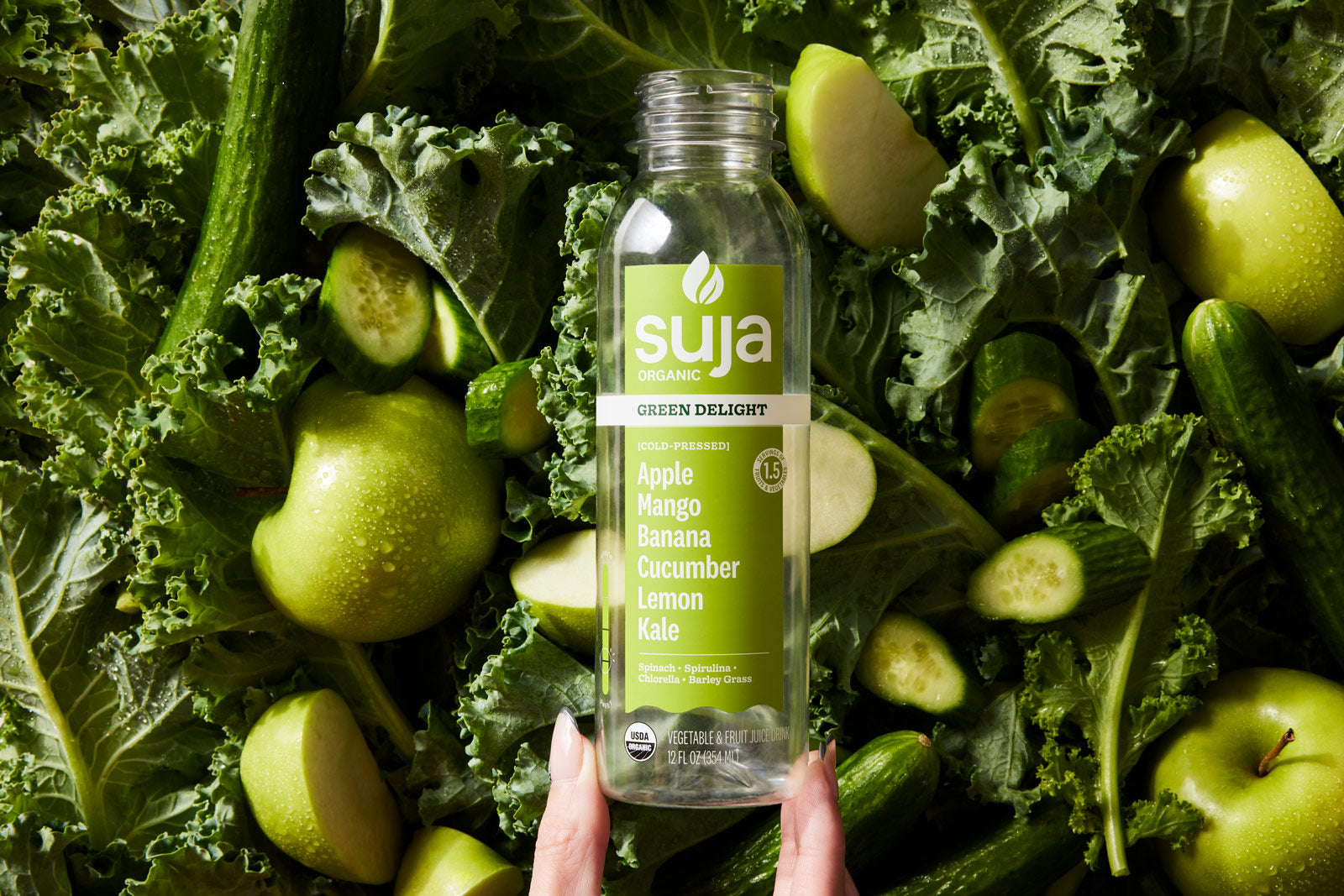If you have a habit of checking food labels, you may frequent something very common called “natural flavors.” You may even think these ingredients are synonymous with “health” and “wellness,” but what does natural flavoring really mean?
Since this terminology tends to serve as a broad blanket statement in today’s buzzing consumer packaged goods world, we’re going to explore if natural flavors are truly natural and what to look out for.
Natural Flavor Definition
The most accurate definition of “natural flavor,” is based on the FDA natural flavors list and exact description:1
“The term natural flavor or natural flavoring means the essential oil, oleoresin, essence or extractive, protein hydrolysate, distillate, or any product of roasting, heating or enzymolysis, which contains the flavoring constituents derived from a spice, fruit or fruit juice, vegetable or vegetable juice, edible yeast, herb, bark, bud, root, leaf or similar plant material, meat, seafood, poultry, eggs, dairy products, or fermentation products thereof, whose significant function in food is flavoring rather than nutritional.”
This broad definition allows companies to use artificial and synthetic chemicals, even if they originally come from natural sources, during manufacturing. As a result, you may get a product labeled as having a "natural flavor," even though it may contain ingredients that are highly processed. Since there’s no strict legal definition of "natural," this practice is entirely permissible.
Where is Natural Flavor on Food Labels?
Based on a recent report, “natural flavors are currently the fourth most common food ingredient listed on food labels.”2 Interestingly enough, many brands aren’t shy about touting a product that contains natural flavors. In fact, it’s pretty conspicuous, typically disclosed in the name. For example “natural honey nut cereal.” Even products like sparkling water that seem like straightforward carbonated water may contain natural flavors to enhance the essence of specific fruits like strawberries, limes, oranges, etc.
Common food items that often contain natural flavors
- Breakfast Cereals (especially those with fruit or vanilla flavors)
- Snack Bars (granola bars, protein bars)
- Yogurts (fruit-flavored or vanilla varieties)
- Soda (including "natural" sodas or those with fruit flavors)
- Ice Cream (vanilla, chocolate, and fruit-flavored varieties)
- Salad Dressings (especially fruity or herbal varieties)
- Packaged Snack Foods (potato chips, crackers)
- Candy and Chewing Gum (fruity or mint flavors)
- Flavored Teas (like fruit or herbal-infused teas)
- Frozen Meals (especially those with sauces or added flavors)
- Plant-based Milk (vanilla or chocolate almond/soy milk)
- Condiments (ketchup, barbecue sauce, or flavored mustard)
- Packaged Soups and Broths (especially "natural" or organic options)
What’s Different About Artificial Flavors?
So now that you know about natural flavors, you might be wondering, what’s the meaning of artificially flavored? Is it interchangeable with natural flavors? The short answer is, no - the two are different. The main contrast is its source. Unlike natural flavors that derive from edible natural sources, artificial flavors stem from food additives and FDA-approved chemicals. According to the FDA, this is the exact definition:3
“The term artificial flavor or artificial flavoring means any substance, the function of which is to impart flavor, which is not derived from a spice, fruit or fruit juice, vegetable or vegetable juice, edible yeast, herb, bark, bud, root, leaf or similar plant material, meat, fish, poultry, eggs, dairy products, or fermentation products thereof.”
Can Natural and Artificial Flavors Coexist?
Yes! Today, it's common for consumer packaged goods to feature a combination of natural and artificial flavors. Many brands use natural flavors as the foundation, then enhance or adjust the taste by incorporating artificial ones. This blend allows both flavor types to work together, creating the product’s overall flavor profile.
Are Natural and Artificial Flavors Really 'Healthy'?
The question on everyone's mind is: "Are natural and artificial flavors healthy?" Unfortunately, there’s no simple answer. Technically, any ingredient on the FDA’s approved list is considered “safe.”
While the FDA defines what constitutes natural flavors, the Flavor and Extract Manufacturers Association (FEMA) plays a crucial role in regularly evaluating their safety. According to FEMA, an independent expert panel has been reviewing the "generally recognized as safe" (GRAS) status of flavor ingredients for nearly 60 years, operating under the authority of the U.S. Congress.4
That said, it’s important to recognize that even FDA/FEMA approved natural flavors can cause side effects, especially for individuals with food sensitivities. People with allergies need to be cautious, as natural flavors may contain trace amounts of allergens like gluten, dairy, or eggs. While not all natural flavors are harmful, the vague labeling used by food manufacturers can make it difficult to assess their safety for every consumer.

Remember, the primary purpose of natural flavors is to enhance taste, not to provide nutrition. To determine whether a product with natural flavors is truly healthy, you should evaluate its overall nutritional value. Is it heavily processed? Does it contain high levels of sugar, unhealthy fats, or sodium? These are the bigger questions that matter when making informed choices.
The Truth About Natural Flavors
So now you know the truth about natural flavors! And the bottom line? It comes down to your personal preferences and comfort levels.
If the idea of consuming artificial ingredients and natural flavors in your food keeps you up at night, rest assured that there are brands that don’t include natural or artificial ingredients. If you’re on the fence, it’s best to buy into brands that are USDA Certified Organic—which sets the bar way higher from a standards perspective.
According to the USDA, "Products sold, labeled, or represented as organic must have at least 95 percent certified organic content. Products containing less than 70 percent organic content may identify specific ingredients as organic in the ingredients list."5

Here at Suja Organic, we take pride in ensuring that all of our USDA Certified Organic, non-GMO products come to you with a clean label, meaning there’s no hidden junk, just ingredients straight from nature. From our best-selling Organic Greens Powder to our cold-pressed juices, wellness shots, and protein drinks, we promise to deliver next-level nutrition you can always feel good about.
Disclaimer: This blog contains promotional content about our products. The information provided in this blog is for educational and informational purposes only and should not be construed as medical advice. While the nutritional information and health tips shared here are based on published studies and expert insights, they should not replace advice and treatment from a healthcare professional. Always consult a qualified healthcare provider with any questions you may have regarding a medical condition or health objectives.
Endnotes
- CFR - Code of Federal Regulations Title 21. (2018). Fda.gov. https://www.accessdata.fda.gov/scripts/cdrh/cfdocs/cfcfr/cfrsearch.cfm?fr=501.22
- Mj, G. (2017). The "Natural" vs. "Natural Flavors" Conflict in Food Labeling: A Regulatory Viewpoint. Food and Drug Law Journal. https://pubmed.ncbi.nlm.nih.gov/29140655/
- CFR - Code of Federal Regulations Title 21. (2024). Fda.gov. https://www.accessdata.fda.gov/SCRIPTs/cdrh/cfdocs/cfcfr/CFRSearch.cfm?CFRPart=101&showFR=1&subpartNode=21:2.0.1.1.2
- Flavor Extract Manufacturers Association (FEMA). (n.d.). https://www.femaflavor.org/
- USDA. (2019). Organic Standards | Agricultural Marketing Service. Usda.gov. https://www.ams.usda.gov/grades-standards/organic-standards














